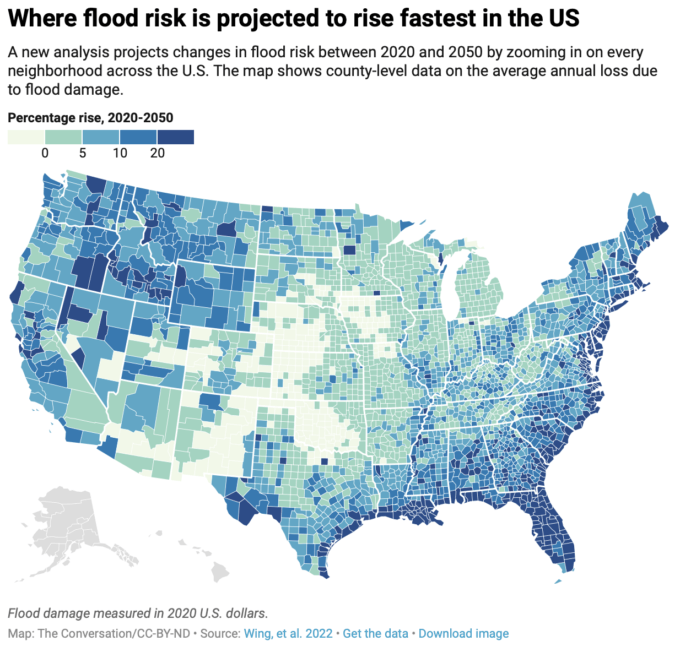Nick Beams
The announcement by the U.S. Treasury that the national government debt has topped $30 trillion is a milestone in the deepening historic crisis of American capitalism.
Over the past several decades, and particularly since the financial meltdown of 2008, the ruling class and the institutions of its state have attempted to cover this crisis over by flooding the financial system with money created with the press of a computer button. But it continues to manifest itself, assuming ever more malignant forms.
In its report on the debt level, the New York Times described it as an “ominous fiscal milestone that underscores the fragile nature of the country’s long-term economic health as it grapples with soaring prices and the prospect of higher interest rates.”
The sheer scale of the debt is almost impossible for ordinary imagination to grasp. But to put it in perspective, at $30 trillion it is now $7 trillion more than the entire gross domestic product of the United States—the total value of goods and services produced in a year—which stands at around $23 trillion.
And the pace of the debt rise is accelerating. At the start of 2020, it was forecast that it would reach $30 trillion by around the end of 2025. The acceleration is being put down to increased spending as a result of the pandemic. But such an analysis ignores two vital facts.
First, the shock to the American economy delivered by the coronavirus has been magnified many-fold by the criminal refusal of the government—under Trump and Biden alike—to take meaningful public health safety measures, especially at the outset, which could have contained the outbreak at the beginning, motivated by fear this would adversely impact the stock market. Further, much of the pandemic spending was devoted to billions of dollars of handouts to major corporations while at the same time providing them with further tax breaks.
Second, the rise of the debt, going back decades, is the result not of increased spending on social services and facilities. These have been continuously cut back. Rather, it is the product of increased spending on the military—the current military budget hit a new record of $770 billion—as well as continuous tax cuts for the ultra-wealthy and the major corporations with the result, as numerous studies have shown, that they pay little or no tax at all.
These policies have remained consistent through the administrations of Bush, Obama, Trump and Biden.
Furthermore, the rise of the national debt is the outcome of deeper processes rooted in a transformation in the mode of profit accumulation in the US economy.
The past four decades and more have seen the rise of financialization—the process by which profits are increasingly accumulated by financial operations via the stock market. This has accelerated over the past two years, with Wall Street reaching new records, resulting in the transfer of trillions of dollars into the coffers of the pandemic billionaires. The same processes are at work in every capitalist economy around the world, assuming their most extreme form in the US.
The immediate questions that arise are how will this debt be paid for and what are its implications for the working class.
Speaking to the virtual meeting of the World Economic Forum last month, U.S. Treasury Secretary Janet Yellen said it was “important to evaluate debt sustainability in the context of the interest-rate environment” and the burden of US debt was “very manageable” because of low interest rates.
The so-called “management” of national debt takes place through the market for U.S. Treasury bonds issued by the US government that are bought up by financial investors. However, in March 2020, as Wall Street plunged, this process completely broke down when there was a rush out of government debt. At the height of the crisis, no buyers could be found for Treasury bonds, supposedly the most secure and stable financial asset in the world.
The crisis, which threatened to bring down US and global financial markets, was only averted through a massive intervention by the Federal Reserve central bank, which backed all areas of the financial system, spending at one point 1 million dollars a second. The result is that, whereas in 2008 the Fed held $800 billion of assets on its books, it now has just under $9 trillion.
In the past decade, the national debt has been increasingly financed by a round-robin operation in which one arm of the state, the government, issues debt in the form of Treasury bonds, while another arm, the central bank buys it up.
It has been calculated that since the Fed began its second quantitative easing program in 2010, its purchases of Treasury debt have funded between 60 and 80 percent of the entire government borrowing requirements.
The result has been the maintenance of interest rates at historic lows, fueling the rise of stock prices to their record highs.
But there is an old economic saying: If a process is inherently unsustainable, then it must stop. How then is this financial orgy to end?
The answer is to be found in the nature of finance capital itself. It is essentially predatory in character. All financial assets in and of themselves do not embody value; they are a claim on value, in particular, the surplus value extracted from the working class in the process of production.
The essence of finance capital, as Karl Marx noted, is its drive to “get rich not by production but by pocketing the available wealth of others.”
This drive, now deeply embedded in all the structures of American capitalism, assumes two forms: war abroad and social counter-revolution against the working class at home.
The escalating provocations of the Biden administration against Russia over Ukraine are being driven in large part by the attempt to project the rising social and political tensions in the US outwards. In addition, there are longer term economic factors at work.
Since the liquidation of the Soviet Union by the Stalinist bureaucracy in 1991, key sections of the US ruling class and its representatives—the late Democrat National Security Advisor Zbigniew Brzezinski was one of these—have seen the plunder of the vast resources of Russia as a means of overcoming the economic decline of American capitalism.
The crisis of the financial system exemplified in the escalation of the national debt to previously unimaginable dimensions is in essence a crisis of value. And the sole source of value in the capitalist economy is the working class. Value can only be put back into the mountain of fictitious capital, of which the national debt is a component, by intensifying the exploitation of the working class to new levels.
Small incidents sometimes provide an insight into broader developments. That is the significance of a recent Wall Street Journal article which chose to feature a comment by a company general manager, forced to lift the entry level wage for workers from $15 per hour to between $16 and $18, who expressed concern that “we don’t know when this hyperinflation for labour costs will end.”
Meanwhile, according to a report in Bloomberg, the pandemic billionaires, such as Amazon chief Jeff Bezos, are seeking to outdo each other in their purchases of superyachts worth millions of dollars, orders for which have risen by 77 percent from a year earlier.
The class battle lines are being laid down. The ruling class has a clear agenda: wars for plunder and a massive assault wages and social conditions of the population in order to enrich itself still further.



